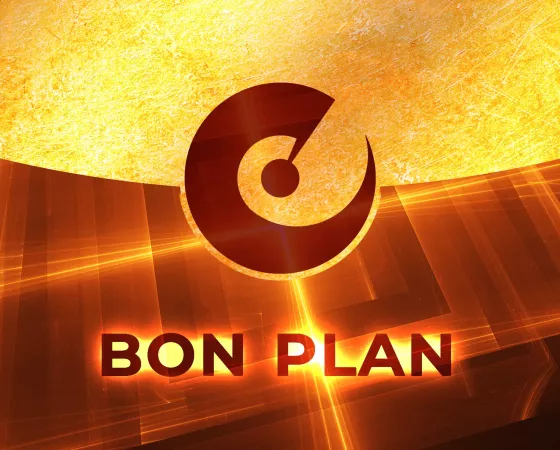Vue lecture
Les tests hardware de la semaine - S43 2025
 Après une semaine plutôt calme pour l’équipe, les H&Tests ont repris sur votre média web indépendant orienté matériel. De quoi vous offrir de la prose soignée pour le week-end : chouette ! Mais nous ne somme toujours pas seuls : dans la francosphère hardware, le Light Base 500 LX s’offre un doub...
Après une semaine plutôt calme pour l’équipe, les H&Tests ont repris sur votre média web indépendant orienté matériel. De quoi vous offrir de la prose soignée pour le week-end : chouette ! Mais nous ne somme toujours pas seuls : dans la francosphère hardware, le Light Base 500 LX s’offre un doub...
Diptyx E-reader : une liseuse double écran Open Source

Avec ses deux écrans qui s’ouvrent comme un livre, la Diptyx E-reader change de nos habitudes de lecture numérique. D’abord par son format, mais surtout par son ouverture. L’objet prévoit d’être totalement documenté et ouvert à terme.

La couverture du Diptyx E-reader
La Diptyx E-reader fonctionne avec des composants commerciaux et pourra être reprise et modifiée à l’avenir. Pilotée par un ESP32, elle profitera d’un firmware Open Source et d’une fabrication Open Hardware. Ce qui laissera le loisir aux plus bricoleurs de la construire eux-mêmes. Imaginée par Martijn den Hoed, la liseuse est, pour le moment, en attente du début de sa campagne de financement sur Crowd Supply à un prix pour le moment encore inconnu.

La Diptyx E-reader peut se replier sur elle-même comme un livre
D’un point de vue plus technique, ce qui fait toute la différence ici, c’est le format de lecture proposé. Avec deux écrans de 5.83 pouces en 640 x 480 pixels de niveaux de gris, la Diptyx E-reader s’ouvre et s’utilise comme un bon vieux livre. Les deux « pages » rassemblées mesurent 12 cm de large pour 15 cm de haut et 1.4 cm d’épaisseur et une fois dépliée, elle s’étale sur 22.6 cm de large. L’ensemble pèse 300 g avec ses deux batteries 1500 mAh et se manipulera exactement comme un bouquin.

Ce premier exemplaire pourra évidemment être amélioré et un utilisateur pourra parfaitement choisir de modifier les écrans pour des modèles plus performants ou de plus grande taille si le cœur lui en dit. Avec une définition d’affichage de 153 pixels par pouce, la proposition actuelle n’est pas vraiment très haut de gamme. C’est deux fois moins qu’une liseuse lambda. Je suppose qu’ici il s’agit d’un choix économique plus que pratique, l’idée est de finaliser le projet et de voir où il mène. Afin de laisser ensuite les internautes imaginer tous les dérivés possibles.

Les données sont pilotées par un circuit ESP32-S3 à 240 Mhz. Suffisant pour les tâches basiques de rafraichissement d’un livre numérique. La mécanique logicielle pourra gérer tout type de publication au format ePub. Construit à partir d’un logiciel existant, l’Atomic14’s epub reader, il permettra de modifier les polices, de changer leur taille et leur espacement ainsi que d’afficher d’éventuelles images. Les écrans ne sont pas tactiles mais des boutons sont présents pour pouvoir naviguer dans l’interface. La partie stockage est confié à un lecteur de cartes MicroSD où sera logé par défaut une carte de 2 Go. Deux batteries de 1500 mAh prendront en charge l’alimentation de l’ensemble avec un port USB Type-C pour les remettre d’aplomb et transférer des données.
Avec une partie logicielle, Open Source, qui pourra être modifiée pour d’autres tâches et un matériel accessible et modifiable, la Diptyx E-reader est à mon sens une excellente « base de travail » pour inventer la liseuse de son choix. Avec un seul écran, un affichage plus grand, un écran tactile, une ouverture vers des contenus en ligne ou toute autre idée du genre. Par défaut les puces ESP32 proposent souvent une excellente connectique et la puce particulière employée ici est équipée d’un module Wi-Fi4 et Bluetooth 5.0 LE. On peut donc tout à fait imaginer un système de lecture basée sur des flux RSS par exemple ainsi que la récupération facile de livres numérique via un portail en ligne.

Je ne connais pas les détails complets de la licence de cette proposition. Avec ce type de base, il est tout à fait imaginable de voir deux scénarios se dessiner. D’abord le développement conjoint d’une solution tout à fait exploitable de liseuse Open Source universelle. Un modèle qui pourra être fabriqué, optimisé et réparé par tout le monde. Qui pourra être adapté à différents usages, de la liseuse compacte à un modèle grand format. De la version avec stylet à celle proposant un bouton déporté en Bluetooth pour convenir à certains handicaps.
Ensuite, suivant les possibilités offertes par la licence, la mise en œuvre de productions plus abordables de liseuses commerciales.
Source : HackaDay. Le site du projet. Merci au petit Biou pour l’info.
Diptyx E-reader : une liseuse double écran Open Source © MiniMachines.net. 2025
Flock : L’effet Papillon
Comme un ouragan

Quand on sème la merde on récolte… de beaux fruits, à n’en point douter, c’est un excellent engrais.
Si vous avez raté mes dessins parus cette semaine : les voici ici et là !
Bon weekend à tous !





Cooler Master fait machine arrière, en comprenant que son connecteur 16 pins coudé était une idée de...
 En juillet 2023, nous vous présentiez la nouvelle idée de l'époque de Cooler Master : fournir un câble d'alimentation 16 pins pour cartes graphiques avec connecteur coudé à 90°.L'arrivée du connecteur coudé chez Cooler Master, en juillet 2023En soi, l'idée pouvait sembler pertinente afin d'éviter qu...
En juillet 2023, nous vous présentiez la nouvelle idée de l'époque de Cooler Master : fournir un câble d'alimentation 16 pins pour cartes graphiques avec connecteur coudé à 90°.L'arrivée du connecteur coudé chez Cooler Master, en juillet 2023En soi, l'idée pouvait sembler pertinente afin d'éviter qu...
NVIDIA Starts Posting Open-Source Nova Driver Patches To Prep For Next-Gen GPUs
Servo's Demo Browser Adds Experimental Mode & More Performance Improvements
KDE Plasma 6.6 Will Cater To Windows Power Users With "winver"
5 minutes pour juger : Clair Obscur : Expedition 33

C'est le dernier samedi du mois, et vous savez quoi ? C'est le jour du test à la va-vite. Comme dit dans le titre, on va surfer sur la déferlante de Clair Obscur : Expedition 33, un jeu difficile à rater vu le carton qu'il a fait en ventes. Mais, comme Brice de Nice, on a attendu la vague au mauvais endroit, donc on en parle seulement maintenant. Au final, ça tombe bien : on a eu le temps de le poncer, des heures et des heures sans jamais s'ennuyer. Et si on y revient aujourd'hui, c'est pour vous partager nos toutes premières impressions et convaincre ceux qui hésitent encore de ne pas passer à côté de cette pépite. Place donc à cinq minutes pour juger ! […]
Lire la suiteFreeBSD 15.0 Beta 3 Brings Working Support For MediaTek MT76 WiFi
Fan des vieux Resident Evil ? Tormented Souls 2 est là et perpétue cette tradition des jeux survival à l'ancienne !
 Tormented Souls 2 est arrivé, il fait logiquement suite au premier opus paru en 2021, mais un peu passé inaperçu. Ceux qui possèdent un compte Amazon Prime ont pu le récupérer dans une version GOG depuis le site Gaming d'Amazon, il n'est pas complètement inconnu. C'est un vrai survival horror à l'an...
Tormented Souls 2 est arrivé, il fait logiquement suite au premier opus paru en 2021, mais un peu passé inaperçu. Ceux qui possèdent un compte Amazon Prime ont pu le récupérer dans une version GOG depuis le site Gaming d'Amazon, il n'est pas complètement inconnu. C'est un vrai survival horror à l'an...
EA Partners With Company Behind Stable Diffusion To Make Games With AI
Read more of this story at Slashdot.
Les prix des cartes graphiques AMD, Intel et NVIDIA semaine 43-2025 : - 30 + 20 - 20 + 30 = ZERO

Bon qu'on se le dide tout de suite, ce n'est pas la grosse fête des prix sur les CG cette semaine encore, l'avantage, la news est rapide à écrire. On commence chez AMD, avec un seul changement, sur la RX 7600 XT qui perd 30 euros cette semaine. AMD, nous avons fait le tour. Pour Intel, aucun changement, c'est donc bouclé aussi. reste NVIDIA, mais vous allez le voir, pas de quoi fouetter un caméléon. […]
Lire la suiteLes vidéos hardware de la semaine 43-2025 : 3 boitiers PC et un ventirad CPU

Grosse semaine encore pour les vidéos avec pas moins de 4 productions en ligne. Nous avons débuté avec un ventirad CPU de Cooler Master, avec le V4 Alpha 3DHP Black. Ensuite, nous avons jeté notre dévolu sur des boitiers, des boitiers et des boitiers avec les be quiet! Light Base 500 LX, CORSAIR AIR 5400 et SHARKOON AK7 ARGB. Et un bon samedi à tous. […]
Lire la suiteUn récap' ensoleillé pour cette fin de semaine

Petite semaine sur le Net pour les articles, mais des produits forts intéressants pour la grande majorité. Du périphérique au PC assemblé, il y a de tout à lire, faisons un point rapide. […]
Lire la suite[Bon plan] Laptop Lenovo avec Core i7 et GeForce RTX 5070 à 1249,99€
 Vous êtes à la recherche d'un ordinateur portable doué pour le jeu, mais ayant un gabarit plutôt petit ? Il y a actuellement une promotion intéressante sur le Lenovo Legion 5 15IRX10 (83LY007HFR), qui permet de l'obtenir pour seulement 1249,99 €.Ce modèle est un 15,3 pouces, ce qui lui permet d'avoi...
Vous êtes à la recherche d'un ordinateur portable doué pour le jeu, mais ayant un gabarit plutôt petit ? Il y a actuellement une promotion intéressante sur le Lenovo Legion 5 15IRX10 (83LY007HFR), qui permet de l'obtenir pour seulement 1249,99 €.Ce modèle est un 15,3 pouces, ce qui lui permet d'avoi...
China's Zhuque-3 Reusable Rocket Passes Key Milestone
Read more of this story at Slashdot.
Iceland Just Found Its First Mosquitoes
Read more of this story at Slashdot.
As Texas Power Demand Surges, Solar, Wind and Storage Carry the Load
Read more of this story at Slashdot.
Sweden's Crowd-Forecasting Platform 'Glimt' Helps Ukraine Make Wartime Predictions
Read more of this story at Slashdot.